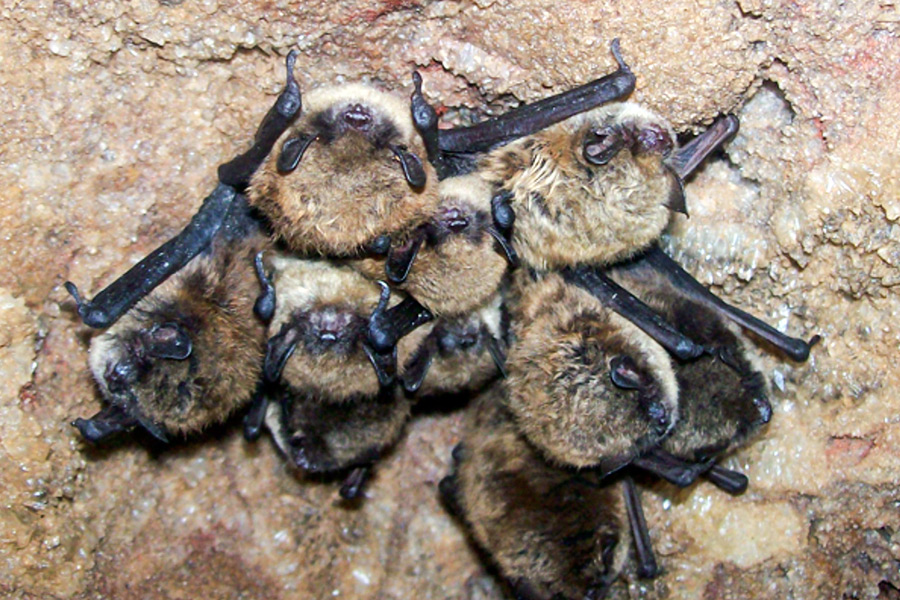Flathead City-County Health Department officials recently issued an advisory urging pet owners to vaccinate their animals for rabies following a “significant increase” in reports of human-animal encounters with bats.
“So far, we’ve confirmed four rabies-positive bats and that is a lot,” the department’s health officer, Joe Russell, said. “All four have been tested after reports of human or animal exposures, which is very alarming to us because some of these animals have not had rabies vaccinations.”
If contracted and untreated before symptoms occur, rabies is almost always fatal to humans, according to health officials. If an unvaccinated pet is exposed to a rabies-positive animal, like a raccoon or bat, it must be euthanized or quarantined for 180 days.
“It’s literally night and day as to how you handle a vaccinated animal versus an unvaccinated animal,” Russell said. “This is a big issue, and the fact of the matter is rabies is 100 percent fatal so we don’t take it lightly. If you contract rabies, you are going to die.”
It’s a healthy reminder, to be sure, but regional biologists are scratching their heads trying to decipher why, in such a light mosquito season, there is an uptick in human-bat encounters.
Lisa Bate, Glacier National Park’s lead wildlife technician who’s been studying bats in the area for years, said she thinks the dearth of edible insects is grounding more young bats and causing them to act erratically, thus coming into contact with dogs, cats and humans.
“I think it’s connected to the weather,” Bate said. “We had the hottest June on record, which is typically when we get a lot of rain, and mosquitoes and other insects breed in wet, stagnant pools. So we’re seeing more bats dying this year. We’re seeing a lot of pups starving to death and females not getting enough food.”
But the thrust of the studies Bate and other regional biologists are conducting in Northwest Montana and Glacier National Park centers on an effort to learn more about the winged mammals before a fungal disease called white-nose syndrome possibly sweeps through local populations.
Although the disease hasn’t arrived in Montana, bats across the Northeast United States have been dying in the millions since white-nose syndrome struck in New York in 2006-07, causing bat populations to plunge by more than 80 percent.
The cause for concern is that bats serve an important ecological and economic role, and some experts have estimated the loss of these bug-eating creatures could cost the U.S. economy more than $3.7 billion a year in agricultural costs.
A single little brown bat can eat 1,000 mosquito-like insects an hour, and a female nursing young (a baby is called a pup or a kit) may consume as many as 4,500 insects in a single night.
Lewis Young, a retired wildlife biologist who spent 40 years with the U.S. Forest Service, says the general public has a misperception about bats, dismissing them as merely flying pests.
“Most people, once they get to see them up close and learn about their adaptations and how they functions in the wild, it often changes their mind,” Young said. “Instead of being a flying pest, people recognize that they are an important ecological component and also have an important economic impact by consuming vast amounts of agricultural pests.”
To educate the public about bats, Young and Bate will host a field trip on Saturday, Aug. 15 at 8:30 p.m. outside Kehoe’s Agates in Bigfork.
The biologists will have monitoring equipment on hand, as well as mist nets set up to capture bats flying overhead.
Bats use echolocation to locate their insect prey, a frequency that human ears can’t detect but which can be recorded and analyzed to determine the species and to monitor populations.
“You can analyze the calls and detect the species,” Young said.
Worldwide, there are 1,200 species of bat, only 0.5 percent of which carry rabies, Bate said. People and animals are more likely to contract rabies from a skunk or raccoon, but given the increase in reports, health officials are urging vigilance, particularly given the high rate of unvaccinated cats, which are required by county ordinance to be rabies vaccinated.
For more information, call the Flathead City-County Health Department at (406) 751-8110.
